Abstract
Fourteen patients undergoing routine cardiac catheterisation were paced at a steady frequency; after this test, stimuli were introduced with a variable preceding interval (test pulse interval). The QT interval of the electrocardiogram and the duration of the monophasic action potential of the right ventricle were measured. QT interval is a function of action potential duration; the two variables were very closely correlated in this study. Both these variables increased in duration with increasing test pulse interval. A biphasic response, as previously reported, was not seen. An increase in steady state pacing frequency caused QT interval and action potential duration to decrease for any given R-R interval. When frequency of stimulation was suddenly increased and then maintained, there was an immediate action potential shortening followed by a further more gradual shortening occurring over several minutes. These results imply that a simple correction of QT interval for heart rate (QTc) is inadequate. It is concluded that the relation between action potential duration (or QT interval) and heart rate depends on both the instantaneous interval between beats and the duration of the prevailing heart rate.
Full text
PDF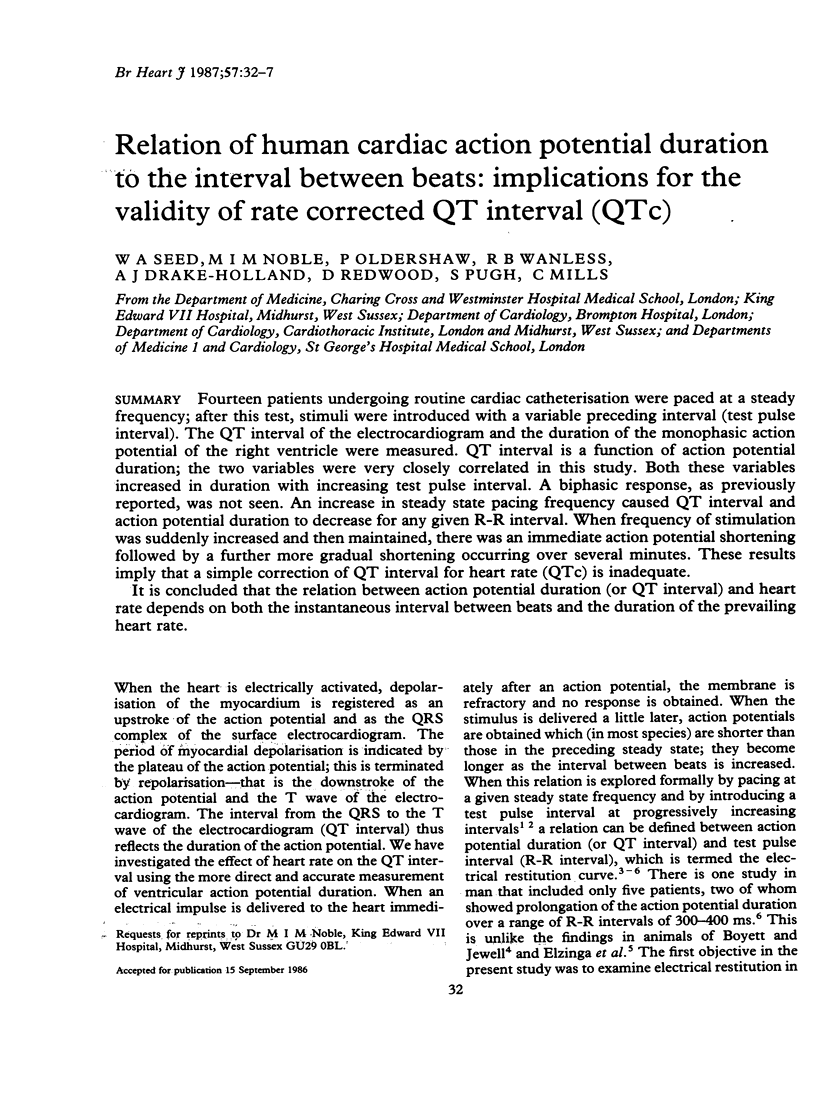
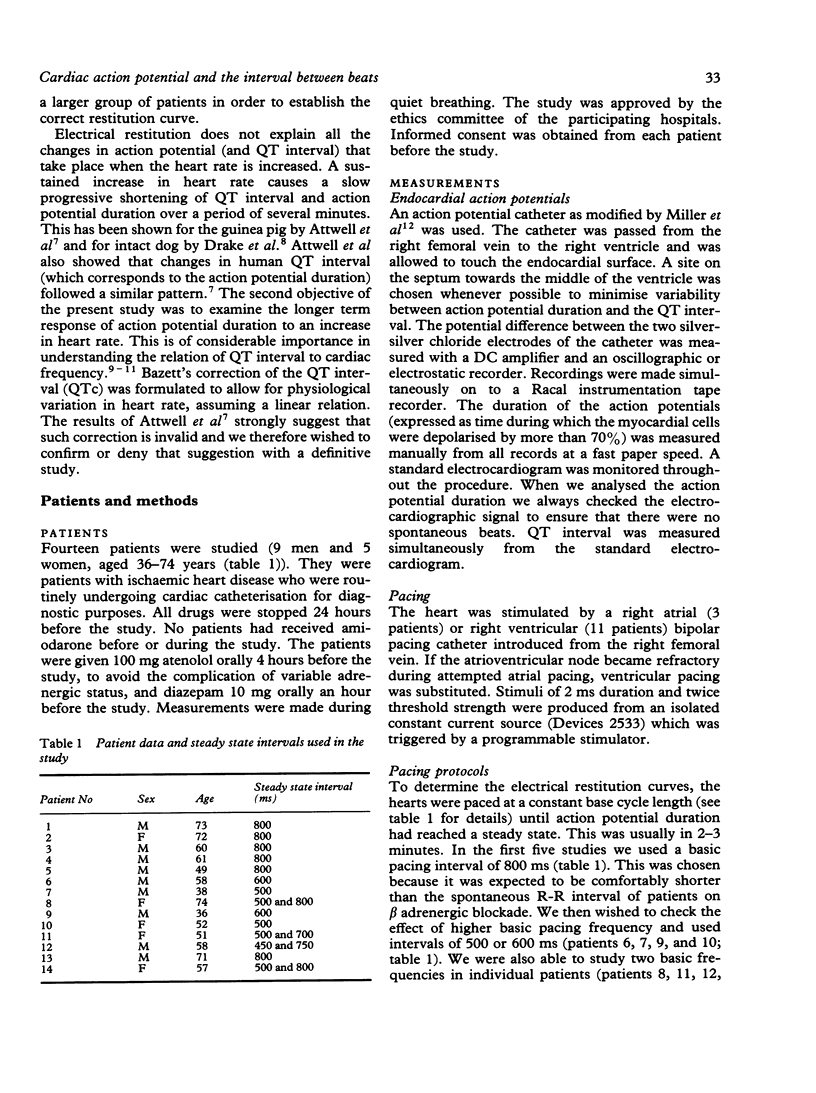
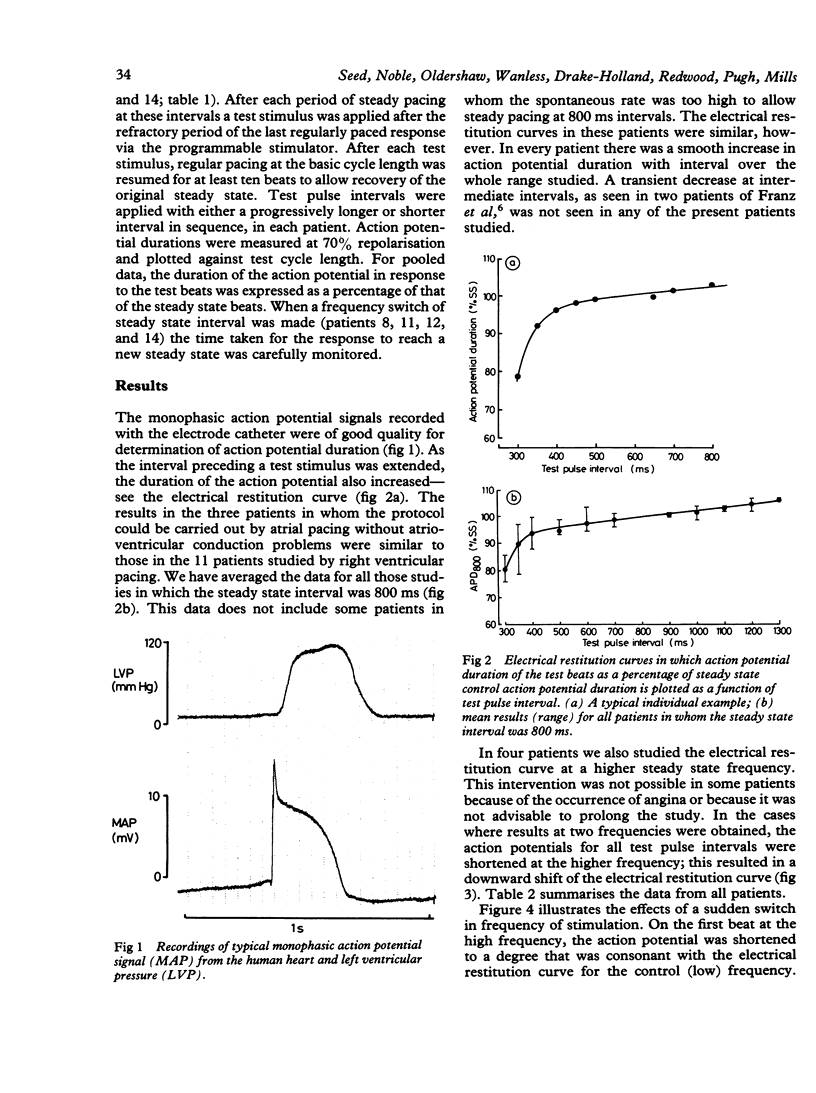
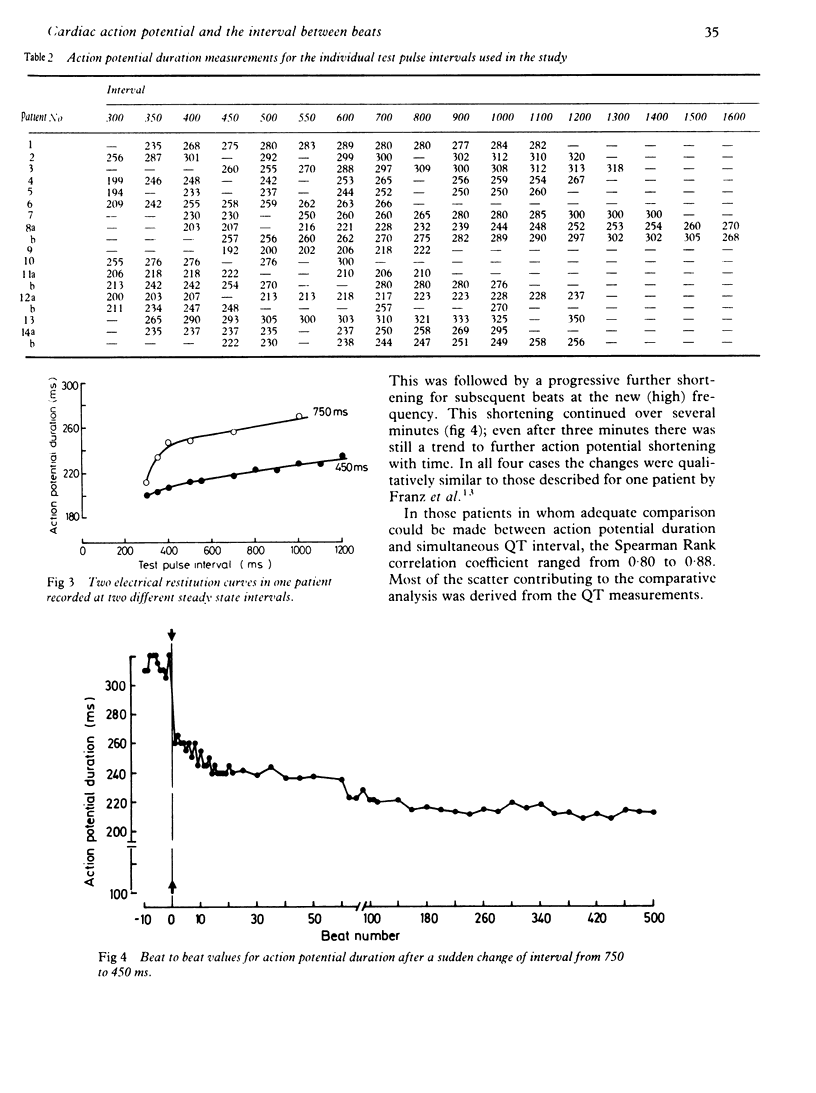
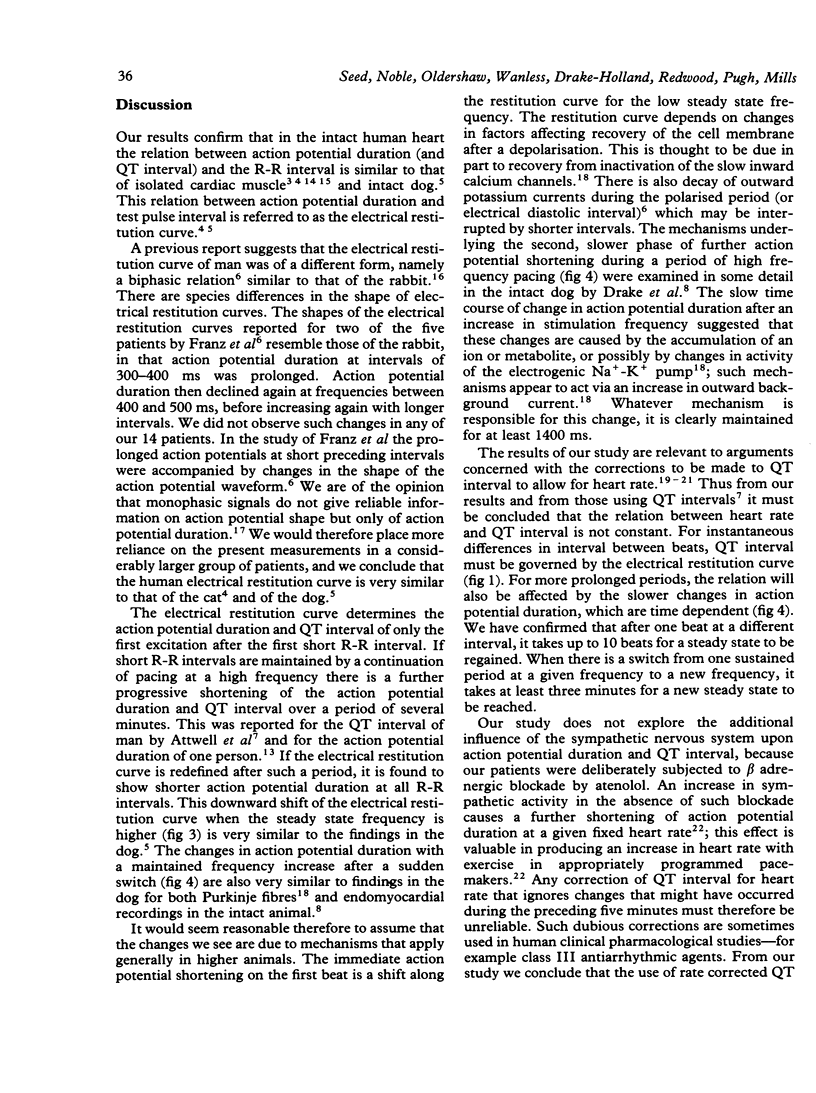
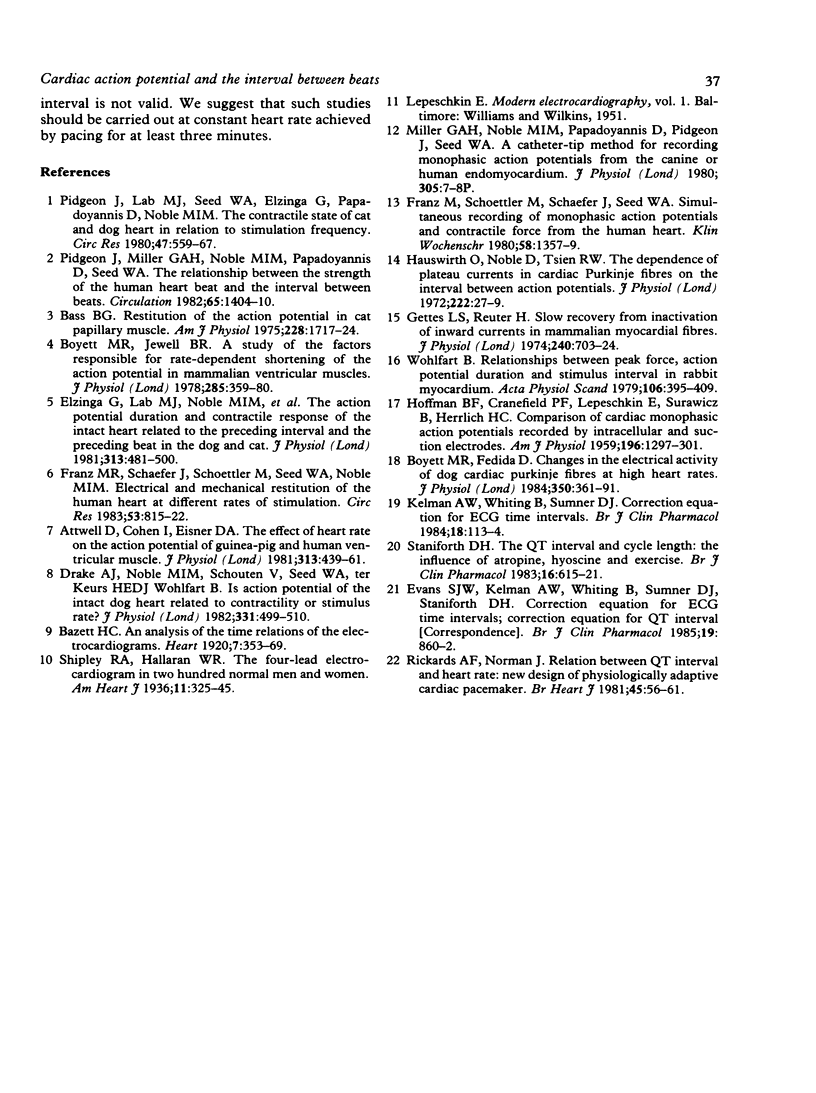
Selected References
These references are in PubMed. This may not be the complete list of references from this article.
- Attwell D., Cohen I., Eisner D. A. The effects of heart rate on the action potential of guinea-pig and human ventricular muscle. J Physiol. 1981;313:439–461. doi: 10.1113/jphysiol.1981.sp013675. [DOI] [PMC free article] [PubMed] [Google Scholar]
- Bass B. G. Restitution of the action potential in cat papillary muscle. Am J Physiol. 1975 Jun;228(6):1717–1724. doi: 10.1152/ajplegacy.1975.228.6.1717. [DOI] [PubMed] [Google Scholar]
- Boyett M. R., Fedida D. Changes in the electrical activity of dog cardiac Purkinje fibres at high heart rates. J Physiol. 1984 May;350:361–391. doi: 10.1113/jphysiol.1984.sp015206. [DOI] [PMC free article] [PubMed] [Google Scholar]
- Boyett M. R., Jewell B. R. A study of the factors responsible for rate-dependent shortening of the action potential in mammalian ventricular muscle. J Physiol. 1978 Dec;285:359–380. doi: 10.1113/jphysiol.1978.sp012576. [DOI] [PMC free article] [PubMed] [Google Scholar]
- Drake A. J., Noble M. I., Schouten V., Seed A., Ter Keurs H. E., Wohlfart B. Is action potential duration of the intact dog heart related to contractility or stimulus rate? J Physiol. 1982 Oct;331:499–510. doi: 10.1113/jphysiol.1982.sp014386. [DOI] [PMC free article] [PubMed] [Google Scholar]
- Elzinga G., Lab M. J., Noble M. I., Papadoyannis D. E., Pidgeon J., Seed A., Wohlfart B. The action-potential duration and contractile response of the intact heart related to the preceding interval and the preceding beat in the dog and cat. J Physiol. 1981 May;314:481–500. doi: 10.1113/jphysiol.1981.sp013720. [DOI] [PMC free article] [PubMed] [Google Scholar]
- Franz M. R., Schaefer J., Schöttler M., Seed W. A., Noble M. I. Electrical and mechanical restitution of the human heart at different rates of stimulation. Circ Res. 1983 Dec;53(6):815–822. doi: 10.1161/01.res.53.6.815. [DOI] [PubMed] [Google Scholar]
- Franz M., Schöttler M., Schaefer J., Seed W. A. Simultaneous recording of monophasic action potentials and contractile force from the human heart. Klin Wochenschr. 1980 Dec 15;58(24):1357–1359. doi: 10.1007/BF01477733. [DOI] [PubMed] [Google Scholar]
- Gettes L. S., Reuter H. Slow recovery from inactivation of inward currents in mammalian myocardial fibres. J Physiol. 1974 Aug;240(3):703–724. doi: 10.1113/jphysiol.1974.sp010630. [DOI] [PMC free article] [PubMed] [Google Scholar]
- HOFFMAN B. F., CRANEFIELD P. F., LEPESCHKIN E., SURAWICZ B., HERRLICH H. C. Comparison of cardiac monophasic action potentials recorded by intracellular and suction electrodes. Am J Physiol. 1959 Jun;196(6):1297–1301. doi: 10.1152/ajplegacy.1959.196.6.1297. [DOI] [PubMed] [Google Scholar]
- Hausworth O., Noble D., Tsien R. W. The dependence of plateau currents in cardiac Purkinje fibres on the interval between action potentials. J Physiol. 1972 Apr;222(1):27–49. doi: 10.1113/jphysiol.1972.sp009786. [DOI] [PMC free article] [PubMed] [Google Scholar]
- Kelman A. W., Whiting B., Summer D. J. Correction equation for ECG time intervals. Br J Clin Pharmacol. 1984 Jul;18(1):113–115. doi: 10.1111/j.1365-2125.1984.tb05036.x. [DOI] [PMC free article] [PubMed] [Google Scholar]
- Pidgeon J., Lab M., Seed A., Elzinga G., Papadoyannis D., Noble M. I. The contractile state of cat and dog heart in relation to the interval between beats. Circ Res. 1980 Oct;47(4):559–567. doi: 10.1161/01.res.47.4.559. [DOI] [PubMed] [Google Scholar]
- Pidgeon J., Miller G. A., Noble M. I., Papadoyannis D., Seed W. A. The relationship between the strength of the human heart beat and the interval between beats. Circulation. 1982 Jun;65(7):1404–1410. doi: 10.1161/01.cir.65.7.1404. [DOI] [PubMed] [Google Scholar]
- Rickards A. F., Norman J. Relation between QT interval and heart rate. New design of physiologically adaptive cardiac pacemaker. Br Heart J. 1981 Jan;45(1):56–61. doi: 10.1136/hrt.45.1.56. [DOI] [PMC free article] [PubMed] [Google Scholar]
- Staniforth D. H. The QT interval and cycle length: the influence of atropine, hyoscine and exercise. Br J Clin Pharmacol. 1983 Dec;16(6):615–621. doi: 10.1111/j.1365-2125.1983.tb02230.x. [DOI] [PMC free article] [PubMed] [Google Scholar]
- Wohlfart B. Relationships between peak force, action potential duration and stimulus interval in rabbit myocardium. Acta Physiol Scand. 1979 Aug;106(4):395–409. doi: 10.1111/j.1748-1716.1979.tb06419.x. [DOI] [PubMed] [Google Scholar]


